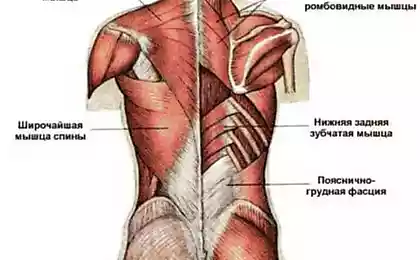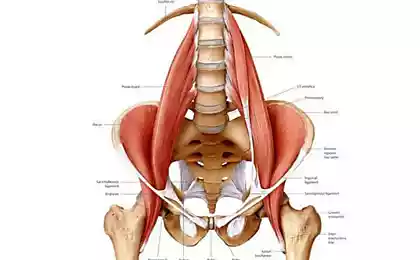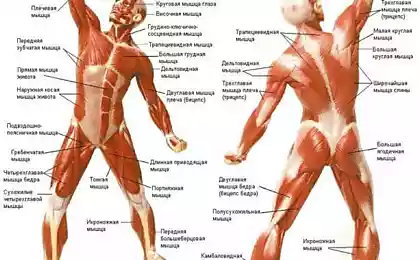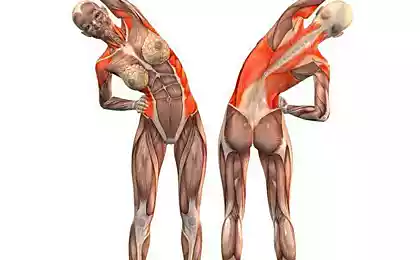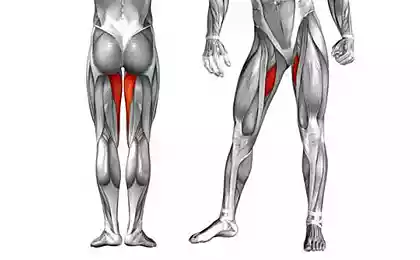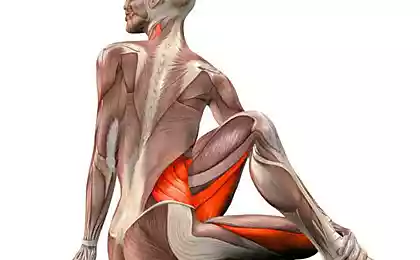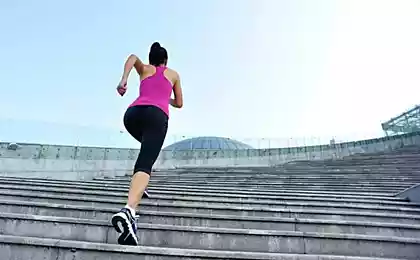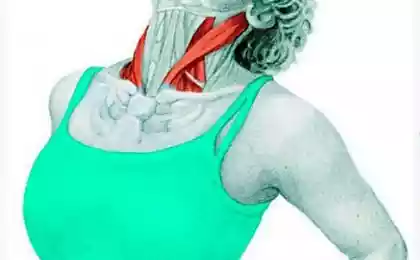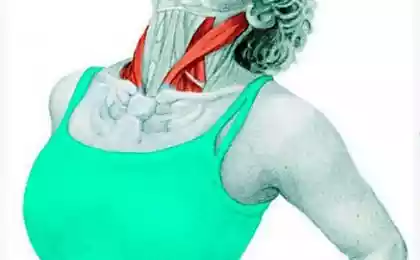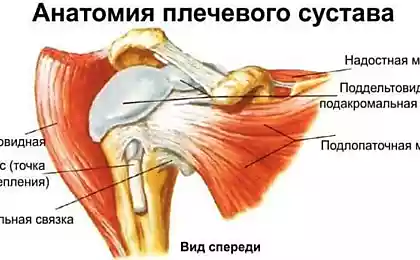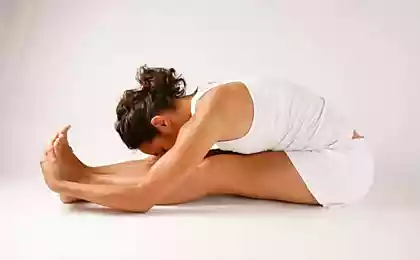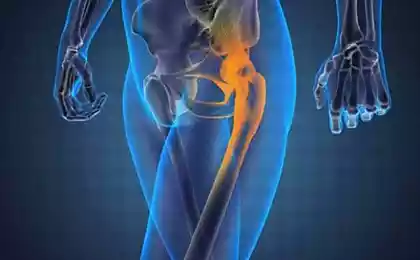825
All about iliopsoas: effective exercises for strengthening and stretching
Iliac-psoas muscle plays an important role when performing exercises specific to weightlifting and daily Jogging or walking. It also affects our physical form and the development of different muscle groups.
This article will help you better understand the work of the iliac psoas muscle and strengthen it by doing simple exercises.
The muscles that comprise the iliac-psoas muscle
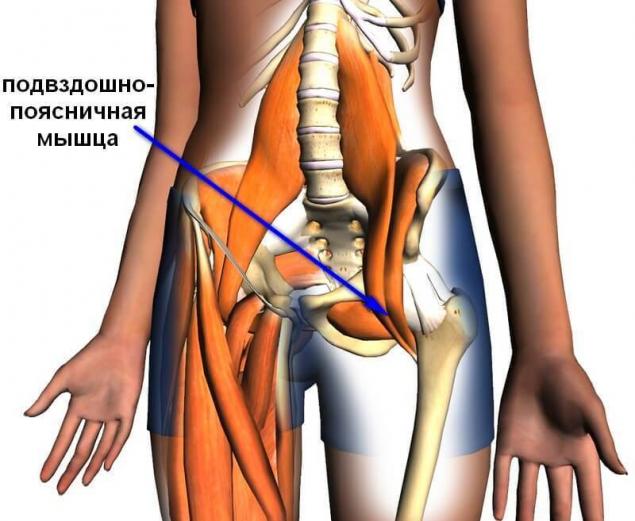
Iliac psoas muscle (lat. Musculus iliopsoas) muscle, the internal muscle groups of the pelvis.
Formed by the combination of distal muscle bundles psoas and iliac muscles. Muscle from the pelvis out through the muscular lacuna and, going down, passes through the anterior surface of the hip joint, attaching a thin short tendon to the small trochanter of the femur.
From Wikipedia
The two muscles that form the iliopsoas muscle, especially important for the flexor muscle groups of the thighs and work as stabilizers. In fact, the ilio-psoas muscle is one of the most powerful flexor muscles. Also there is a third muscle, which will be discussed later.
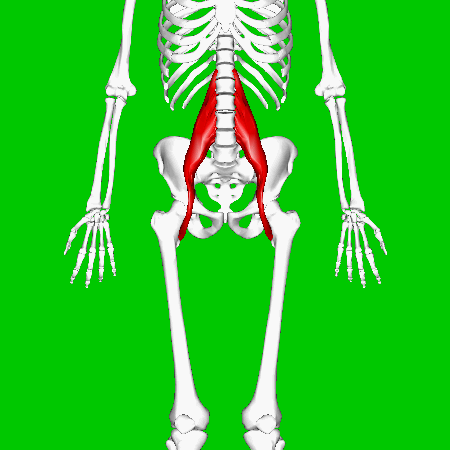
Anatomy of the ilio-psoas muscles
A large psoas muscle. This muscle, which is located in the abdominal press.
Iliac muscle. Located deep in the abdomen in the iliac fossa.
Small psoas muscle. Approximately 40% of the population has lumbar minor muscle. Interestingly, the small psoas muscle is a very important muscle for the movement of dogs and cats, and practically useless for a human.

Weakness in iliopsoas
Weak ilio-psoas muscle can lead to stooped posture, or "flat back." The severity and tension of the rear portion of the hip joint creates a stretching of the hips. Studies have shown that in normal conditions ilio-psoas muscle works to create a phase of support and to counter emerging stress. A long stretch leads to the fact that the resulting stooped posture increases stress on the anterior ligaments of the hip joint, it can lead to instability in the hip joint. Can also cause muscle imbalance due to over compensation of muscle tissue.
Weakness in iliopsoas and sport
Weakness in iliopsoas reduces the ability of the hip to bend, and also brings difficulties in the movement of the body forward while lifting from a sitting position or when walking uphill. If you do a run, then the quality of your step, and thus the training will also deteriorate.
In order to understand how it may affect of weightlifting, just look at the exercise which is called "Olympic leap," and in fact is a power-lifting barbells for Boobs. Many have heard about the expression "the triangles capacity," used in weightlifting. This is the position when the legs are bent at the hips, and the body tilted forward. If you have a weak ilio-psoas muscles, you will be hard to be in this position. Besides, you most likely will not be able to perform as strong leap and lift weights. Weakness of this muscle can cause instability in the position of an athlete and give him discomfort.
How to strengthen the iliopsoas muscle
Strengthening this muscle will help you to develop speed, agility, and strength when performing exercises of weightlifting. You can perform any of the basic exercises presented below, before or after a workout.
Leg raisesLie on your back, legs pull ahead. Put your hands either under your butt, or behind your head. If the hands are behind the head, be careful to ensure that the lower back remains on the floor and was not curved. The best way is to imagine that you pull the navel to the spine. Lift one leg a few inches. Do 10 – 15 times each leg.

Lifting the legs in visTake a position on the bar. Lift both legs toward your chest. It is important that your knees have reached your chest. We can help ourselves elbows.
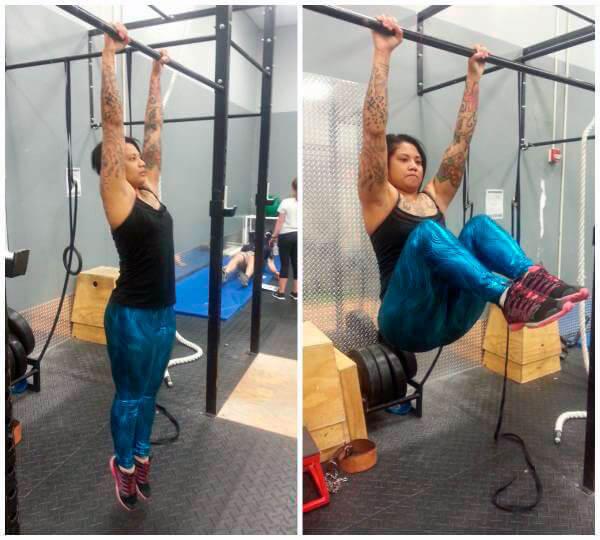
Area sittingLie down on the floor. Raise your shins, knees bent at 90 degrees. Put your hands on the leg and start to lift your upper body. Stretch your arms forward the sides. Try to lift both legs as high as you can upwards. Hold this position for 10-15 seconds. Repeat the exercise 10 times.
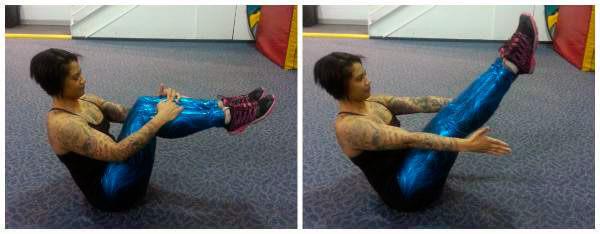
Stretching ilio-psoas muscles
The tension in this muscle can be associated with discomfort in the lower back because the muscles put pressure on the pelvis and affect the movement of the waist and hips. Follow these exercises to help "lengthen" the muscles.
Low lungewe All know what a lunge. Don't forget to keep one leg bent at the knee at 90 degrees, and the second almost parallel to the floor. Raise your upper body. If you want to raise your arms over your head to increase the tension.
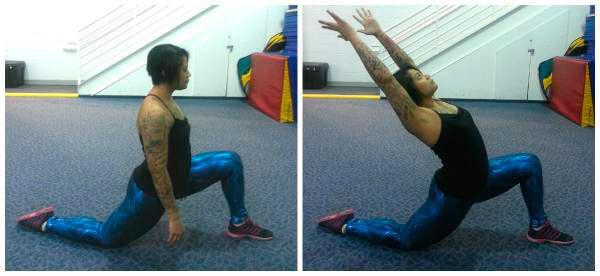
The bridgeLie on the floor. Bend legs at the knees so that the feet were as close to the buttocks. Hands should be on the floor at the sides.

PlankSit on the floor. Put your hands on the floor behind you fingers to your feet. Gradually start to lift the pelvis so as to feel the tension in his hands. The legs should be bent at a 90-degree angle. If you feel comfortable in this position, straighten your legs at the knees. Try to stay in this position for 30 – 60 seconds.

Also interesting: Mnogoobraznye squats: training program
The muscle fiber types and rules for their training
Healthy iliac-lumbar muscles is important for all daily exercises. It is therefore necessary to strengthen and develop these muscles to get maximum results from training and avoid injury. If you feel pain in iliopsoas, see a physiotherapist or massage therapist.published
P. S. And remember, only by changing their consumption — together we change the world! ©
Source: zazozh.com/zdorove/travmy-i-lechenie/podvzdoshno-poyasnichnaya-myshtsa.html
This article will help you better understand the work of the iliac psoas muscle and strengthen it by doing simple exercises.
The muscles that comprise the iliac-psoas muscle

Iliac psoas muscle (lat. Musculus iliopsoas) muscle, the internal muscle groups of the pelvis.
Formed by the combination of distal muscle bundles psoas and iliac muscles. Muscle from the pelvis out through the muscular lacuna and, going down, passes through the anterior surface of the hip joint, attaching a thin short tendon to the small trochanter of the femur.
From Wikipedia
The two muscles that form the iliopsoas muscle, especially important for the flexor muscle groups of the thighs and work as stabilizers. In fact, the ilio-psoas muscle is one of the most powerful flexor muscles. Also there is a third muscle, which will be discussed later.

Anatomy of the ilio-psoas muscles
A large psoas muscle. This muscle, which is located in the abdominal press.
- Action. In the hip muscle flexes, rotates and moves the thigh.
- Origin. The bodies and transverse processes of the vertebrae.
- The place of attachment of muscles. Small trochanter of the femur.
- Nervous innervation. The lumbar plexus.
Iliac muscle. Located deep in the abdomen in the iliac fossa.
- Action. Works the same as the lumbar muscle.
- Origin. Iliac fossa.
- The place of attachment of muscles. Small trochanter of the femur.
- Nervous innervation. Femoral.
Small psoas muscle. Approximately 40% of the population has lumbar minor muscle. Interestingly, the small psoas muscle is a very important muscle for the movement of dogs and cats, and practically useless for a human.
- Action. Helps to create lordotic curve in the lumbar spine and tilt pelvis back.
- Origin. The bodies and transverse processes of the first lumbar vertebra.
- The place of attachment of muscles. The upper branch of the pubic bone.
- Nervous innervation. The anterior branch of the lower back.

Weakness in iliopsoas
Weak ilio-psoas muscle can lead to stooped posture, or "flat back." The severity and tension of the rear portion of the hip joint creates a stretching of the hips. Studies have shown that in normal conditions ilio-psoas muscle works to create a phase of support and to counter emerging stress. A long stretch leads to the fact that the resulting stooped posture increases stress on the anterior ligaments of the hip joint, it can lead to instability in the hip joint. Can also cause muscle imbalance due to over compensation of muscle tissue.
Weakness in iliopsoas and sport
Weakness in iliopsoas reduces the ability of the hip to bend, and also brings difficulties in the movement of the body forward while lifting from a sitting position or when walking uphill. If you do a run, then the quality of your step, and thus the training will also deteriorate.
In order to understand how it may affect of weightlifting, just look at the exercise which is called "Olympic leap," and in fact is a power-lifting barbells for Boobs. Many have heard about the expression "the triangles capacity," used in weightlifting. This is the position when the legs are bent at the hips, and the body tilted forward. If you have a weak ilio-psoas muscles, you will be hard to be in this position. Besides, you most likely will not be able to perform as strong leap and lift weights. Weakness of this muscle can cause instability in the position of an athlete and give him discomfort.
How to strengthen the iliopsoas muscle
Strengthening this muscle will help you to develop speed, agility, and strength when performing exercises of weightlifting. You can perform any of the basic exercises presented below, before or after a workout.
Leg raisesLie on your back, legs pull ahead. Put your hands either under your butt, or behind your head. If the hands are behind the head, be careful to ensure that the lower back remains on the floor and was not curved. The best way is to imagine that you pull the navel to the spine. Lift one leg a few inches. Do 10 – 15 times each leg.

Lifting the legs in visTake a position on the bar. Lift both legs toward your chest. It is important that your knees have reached your chest. We can help ourselves elbows.

Area sittingLie down on the floor. Raise your shins, knees bent at 90 degrees. Put your hands on the leg and start to lift your upper body. Stretch your arms forward the sides. Try to lift both legs as high as you can upwards. Hold this position for 10-15 seconds. Repeat the exercise 10 times.

Stretching ilio-psoas muscles
The tension in this muscle can be associated with discomfort in the lower back because the muscles put pressure on the pelvis and affect the movement of the waist and hips. Follow these exercises to help "lengthen" the muscles.
Low lungewe All know what a lunge. Don't forget to keep one leg bent at the knee at 90 degrees, and the second almost parallel to the floor. Raise your upper body. If you want to raise your arms over your head to increase the tension.

The bridgeLie on the floor. Bend legs at the knees so that the feet were as close to the buttocks. Hands should be on the floor at the sides.

PlankSit on the floor. Put your hands on the floor behind you fingers to your feet. Gradually start to lift the pelvis so as to feel the tension in his hands. The legs should be bent at a 90-degree angle. If you feel comfortable in this position, straighten your legs at the knees. Try to stay in this position for 30 – 60 seconds.

Also interesting: Mnogoobraznye squats: training program
The muscle fiber types and rules for their training
Healthy iliac-lumbar muscles is important for all daily exercises. It is therefore necessary to strengthen and develop these muscles to get maximum results from training and avoid injury. If you feel pain in iliopsoas, see a physiotherapist or massage therapist.published
P. S. And remember, only by changing their consumption — together we change the world! ©
Source: zazozh.com/zdorove/travmy-i-lechenie/podvzdoshno-poyasnichnaya-myshtsa.html

